What Is a Faucet Aerator?
Faucet aerators are designed to make your water stream smoother, more consistent, and less likely than other household objects like pots or pans. The average faucet aerator will limit the output of 1-2 GPM (gallons per minute) on higher-end models. Still, this number can vary depending on the model, so it is crucial for you as a buyer to beware!
What Is a Faucet Aerator’s Purpose?
Tapping out the aerator upside-down might release some grit or scale. An aerator does filter sediment, but this is not its primary purpose. Instead, a faucet aerator improves the water flow and makes it feel softer by introducing tiny bubbles into the stream.
It also:
- A more comprehensive water stream is formed
- Reduces water splashing in the sink.
- Save water by using Proof to make your flow more productive.
- Save water by installing a flow-restrictor aerator
- The tiny water bubbles can activate soap faster, which saves both soap and water.
- Changes the taste of drinking water to be lighter and more refreshing.
You don’t need an aerator for exterior faucets like garden hoses), shower and bathtub faucets, or clothing washer water supply faucets. It might potentially cause more harm than benefit. The primary purpose of an aerator is to provide a lighter stream of water, but that’s not necessary for these circumstances.
How Do Find Out If Faucet Has an Aerator?

A faucet aerator is a device that attaches to the end of a faucet and helps to reduce splashing and improve water taste by introducing oxygen. Nearly all kitchen and bathroom sinks are installed as standard components, but they can also be purchased separately and attached to faucets that lack or have broken aerators.
As the aerator is usually assembled and only needs to be screwed onto the faucet, it’s easy to determine if you have one by looking for something screwed onto the end of your tap with a mesh disk. If there’s a disk with a hole in the center, that’s also an indication of an aerator.
What Percentage of Water is Used by a Faucet Per Minute?
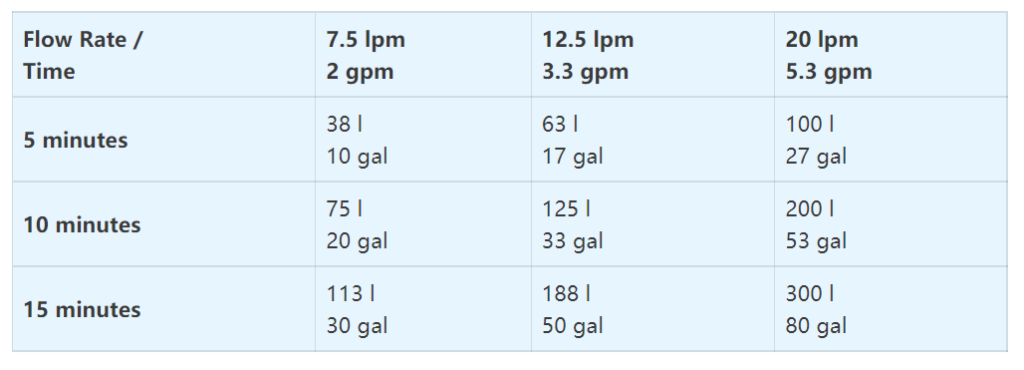
In the United States, faucets have an average flow rate of 1.0 to 2.2 gallons per minute (GPM). The highest flow rate for kitchen and bathroom faucets is 2.2 pm at 60 pounds per square inch (psi), while other nations have lower limits. For example, Georgia only allows a maximum flow rate of 2.0 GPM, and California’s limit is set at 1.8 GPM due to environmental regulations.
The flow rate for many bathroom faucets is much lower than that of kitchen faucets. They can run at 0.8 pm to 1.5 GPM without significantly decreasing what most people term “water pressure.”
How Can Flow Rate Be Reduced On A Faucet?
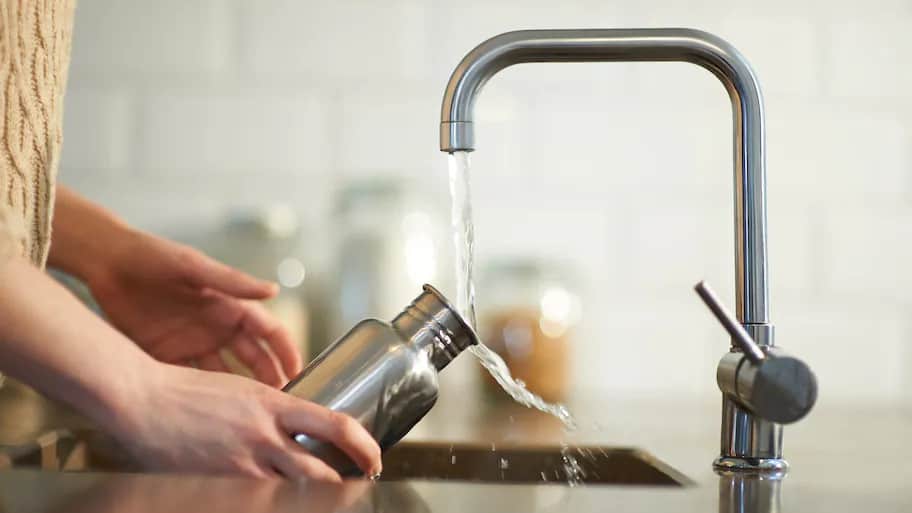
If you want to reduce your faucet’s flow rate, installing a new aerator is one of the easiest ways. Aerators work by creating a mixture of water and air, which helps to make the water stream smoother and limits the overall flow.
If your current water flow is too high, replacing the aerator is a quick and easy way to help reduce it. If your water flow is too high for your needs after measuring it, it’s often a good idea to replace the aerator. This is particularly valid if you want to reduce the cost of your water bill.
Installing a new aerator is relatively easy and is one of the most effective ways to help reduce your faucet’s flow rate. Therefore, replacing your old aerator with a new one is an excellent place to start if you’re looking for strategies to reduce water usage.

How Might You Boost the Flow Rate of Your Faucet?
You can increase your faucet’s flow rate in a few different ways. One way is to replace the aerator. You can try shopping for a model with a greater GPM to allow for gallons per minute. An aerator that inhibits water flow could drastically decline flow if you live in a low-water-pressure location.
Cleaning the aerator is an additional option. The aerator screen’s perforations may become blocked by mineral deposits, reducing water flow. To dissolve and loosen the minerals, boil them in vinegar for around 30 minutes. Alternatively, you can use a little pin to drive through each hole.
If aerator cleaning is ineffective, you should look for plumbing leaks. Less water will come out of your faucet if you lose water in this way.
Choose the Correct Aerator Type for Your Faucet
If the aerator on your sink is rusty or damaged, it’s time for a new one. Aerators come in various styles and sizes and are typically found in stores. Be sure to pick the right size and type for your faucet to fit appropriately.
These faucets.) are the most common type. They work by screwing into the end of the spout and, as the name implies, do not move.
Male or Female Aerators
Before you add or replace your faucet’s aerator, you need to determine the threading type – male or female. If there are threads on the exterior of your kitchen faucet, it is male threaded. This requires that you purchase a FEMALE threaded aerator to fit over it. On the other hand, if there are threads inside your Female Threaded Fuctive, it will require a MALE Thread Aerator.
Female aerators have threads on the inside. Female aerators are used on male faucet spouts with external threads. Male aerators have exterior threads connected to faucet spouts with internal threads.
Dual Aerators
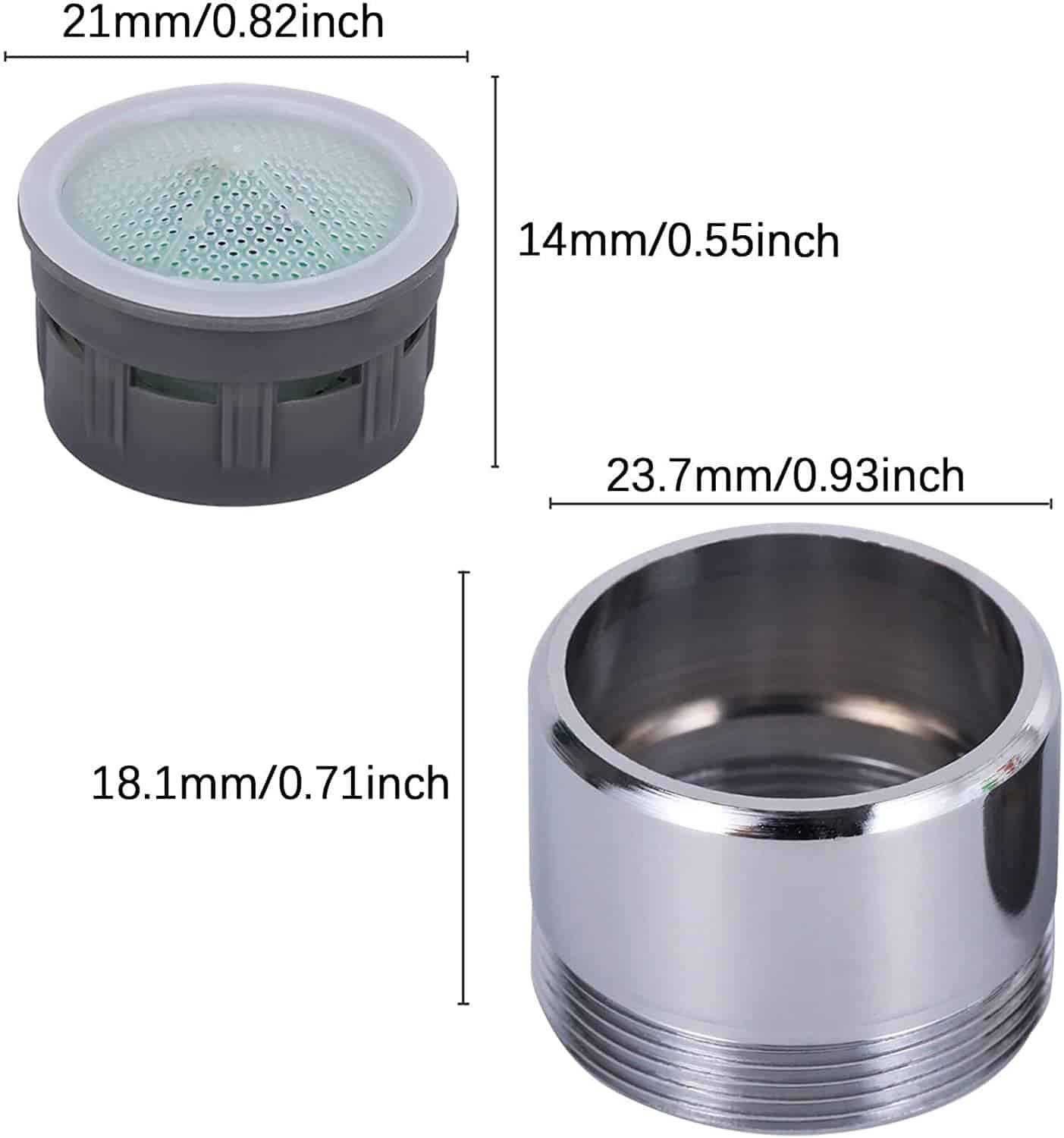
Most aerators have an outward and inner thread divided by a thin inside of the device.
Standard Aerators
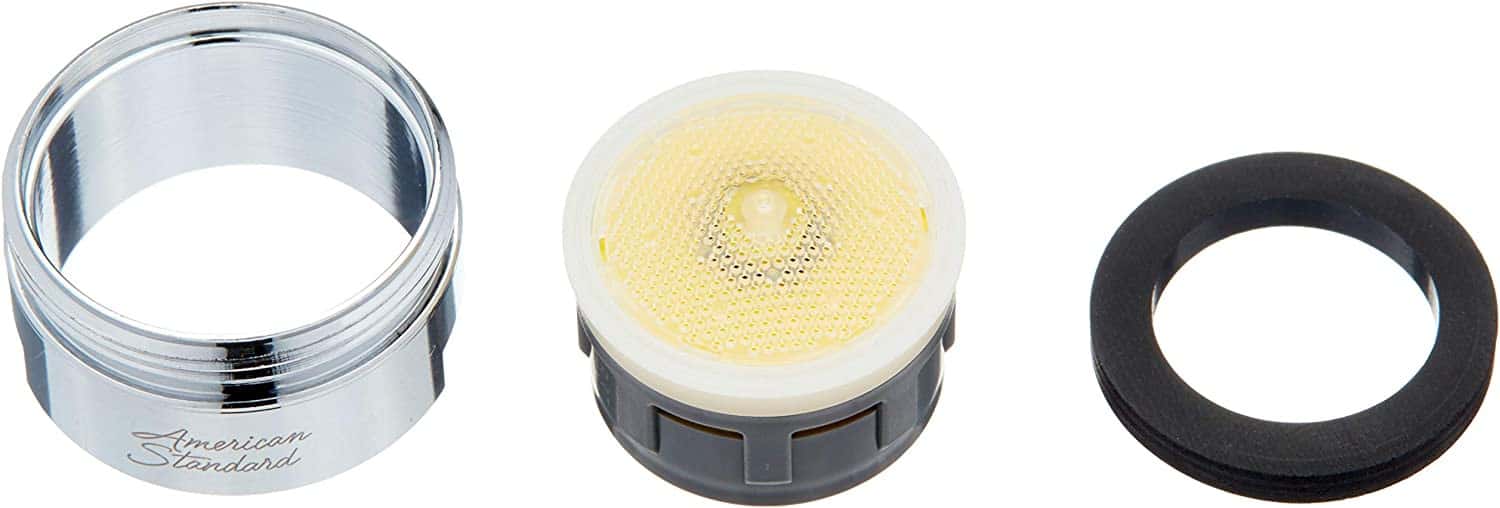
Because they extend from the faucet spout, visible aerators are easy to spot.
Cache Aerators

These aerators, often seen in expensive faucets, are concealed inside the faucet.
Swivel aerator

The water flow from a swivel aerator can be rotated or directed in different ways. You control where the water goes by pulling or retracting the stream. Swivel aerators are primarily found in the newer model kitchen and bathroom faucets. Some even come with a side outlet that easily allows you to attach a hose for use while filtered water is still being diverted.
Determine the Right Size Aerator
Sizes of Faucet Aerators
Faucet Aerators range from 16 mm-ex (Tom Thumb) to 24-28 mm-ex (regular). Junior and Tiny Junior are the categories for mid-range aerators (20 to 22 mm-ex) (18 mm-ex). The size of the spout aperture on the faucet arm will determine which choice is ideal for you.
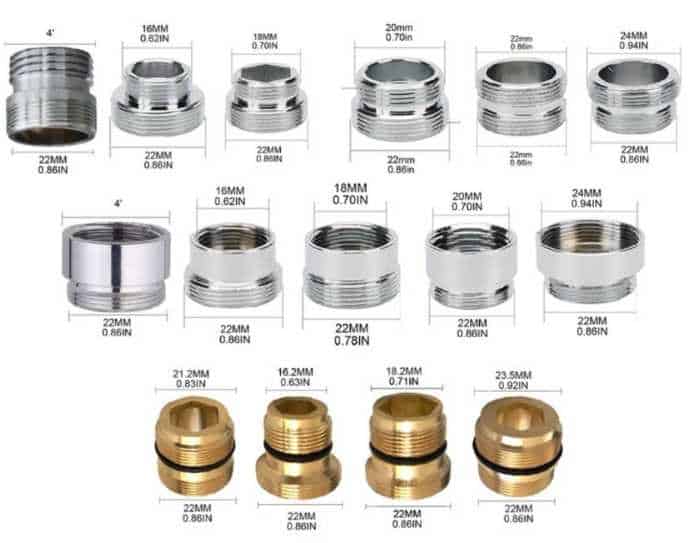
Keep in mind that faucet aerators come in different sizes. To ensure you get a suitable replacement, take note of the size of your old aerator.
Standard Aerators
The most popular size of aerators is 1.5 inches, with three types available. Remove the old aerator from your tap and lay it on a flat surface next to a quarter, dime, or nickel.
- The penny-size aerator is usually adequate for tiny ponds with a diameter of less than 2 feet. The cost depends on the size of the aerator and will range from $3 to $5.
- You will need a junior-size one if the old aerator is small, like a dime. They typically cost between $4-$8.
- A quarter-size aerator will only cost you around $3-$6.
Cache Aerators
You may have a few questions about how to clean your pool with an aerator. The hole size in the center of each aerating screen determines its usefulness, so make sure you choose one appropriate for your needs. Cache aerators come in four sizes, and you’ll also need a tiny penny for one. Cache aerators are measured similarly to other types of aeration screens; however, they are not sized like penny-size holes.
Choose the Water Stream You Need

Depending on the purpose of the faucet, four distinct types of water streams are available.
- Aerated stream
Aerators improve water quality and reduce costs by adding air to the water stream, creating a whiter, softer stream that is non-splashing. Hofen’s low-flow-rate aerators are an excellent choice for residential faucets.
- Laminar stream
Hofen® end devices with laminar streams produce a powerful and non-aerated water stream, perfect for high-volume applications or healthcare facilities where you don’t want to mix water and air. These spouts create a clear stream without any splashing.
- Multiple Laminar Spray
A spray device creates a miniature shower pattern when the flow rate isn’t strong enough to produce an aerated or laminar stream. This provides complete coverage of the hands during washing and is excellent for use in kitchens. Sprays are recommended for public lavatories as well.
- Flow performance
The water and energy conservation products cater to various flow rats so that they can be employed in residential, commercial, and institutional settings.
How to Replace a Faucet Aerator
What you’ll need:
TOOLS
- Expandable pliers with protective rubber jaws
- Wire bristle brush or old toothbrush
- Slot-headed screwdriver
SUPPLIES
- Teflon or silicone lubricant
- White vinegar to clean deposits
- Paper towels or an old rag
- The correct aerator for your specific faucet
A clogged or old aerator might be why water is shooting from your faucet to one side or if the flow has slowed to a dribble. There are three designs of faucet aerators: housing, integrated thread, and unique design models. Some types of faucets don’t allow you to replace the aerator, while other models don’t even have an aerator.
Faucet aerators are inexpensive and easy to remove for those who like doing things themselves. Although you won’t need to engage a professional plumber, you could occasionally need hand labor or minor tools. You will need the size-specific device with your new aerator for cache aerator removal.
- Remove It By Hand

If you’re having trouble removing the old aerator, get a good grip and try unscrewing it by hand. Aerators are often threaded, so they shouldn’t be too difficult to remove.
- Try Pliers

Once you’ve tried removing it by hand, the next step is to use pliers if that doesn’t work. If the aerator is still in good condition and you want to reuse it, wrap a rag or masking tape around it first to protect the metal surface from scratches before gripping it with the pliers. A small pair of channel-type pliers works best for this.
The most crucial thing is to ensure that the aerator is the sole object in your grasp with the pliers’ jaws, not the faucet spout. Once you have a good grip, turn the aerator counter-clockwise (as viewed upward from below the spout) to unscrew it. If this doesn’t work, try moving the pliers a quarter-turn around the aerator and unscrewing it from this new position. (Moving to different positions can gradually loosen a stubborn aerator.) Just be careful not to grip it too tightly because the metal is soft and bends easily, making your job harder.
- Heat the Aerator
Heat may be required if the aerator still won’t move or you accidentally bent it somewhat. You might be able to expand the metal with a hairdryer, which would enable you to free the metal aerator.
Don’t try this on plastic aerators; don’t use high heat, as any rubber washer or plastic parts may melt. This technique can also be used to remove a frozen pipe. Be careful not to overheat the area, and always have a bowl of cold water nearby in case you need to cool down the room and prevent further damage quickly.
- Apply Penetrating Oil
Try using oil if you’re having trouble removing an aerator from a faucet. You can spray the threads with WD-40 or a comparable agent, let it set for a few minutes, and then use pliers to use the product to loosen the aerator. The oil is slippery on the metal, so that it may take a couple of tries. This method is usually less expensive than others, as WD-40 or a similar product generally costs around $6 at local hardware stores.

